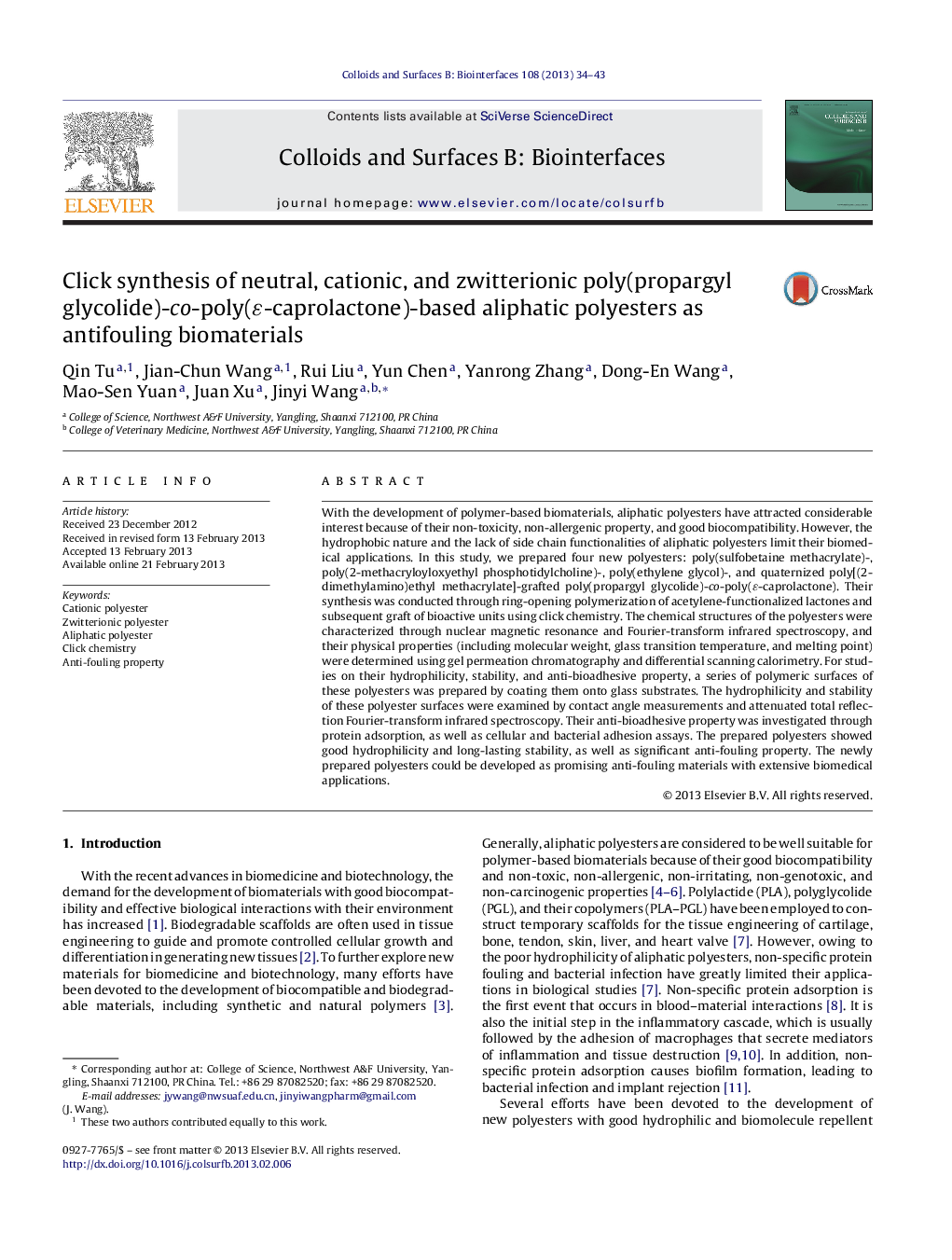| کد مقاله | کد نشریه | سال انتشار | مقاله انگلیسی | نسخه تمام متن |
|---|---|---|---|---|
| 600155 | 1454296 | 2013 | 10 صفحه PDF | دانلود رایگان |

With the development of polymer-based biomaterials, aliphatic polyesters have attracted considerable interest because of their non-toxicity, non-allergenic property, and good biocompatibility. However, the hydrophobic nature and the lack of side chain functionalities of aliphatic polyesters limit their biomedical applications. In this study, we prepared four new polyesters: poly(sulfobetaine methacrylate)-, poly(2-methacryloyloxyethyl phosphotidylcholine)-, poly(ethylene glycol)-, and quaternized poly[(2-dimethylamino)ethyl methacrylate]-grafted poly(propargyl glycolide)-co-poly(ɛ-caprolactone). Their synthesis was conducted through ring-opening polymerization of acetylene-functionalized lactones and subsequent graft of bioactive units using click chemistry. The chemical structures of the polyesters were characterized through nuclear magnetic resonance and Fourier-transform infrared spectroscopy, and their physical properties (including molecular weight, glass transition temperature, and melting point) were determined using gel permeation chromatography and differential scanning calorimetry. For studies on their hydrophilicity, stability, and anti-bioadhesive property, a series of polymeric surfaces of these polyesters was prepared by coating them onto glass substrates. The hydrophilicity and stability of these polyester surfaces were examined by contact angle measurements and attenuated total reflection Fourier-transform infrared spectroscopy. Their anti-bioadhesive property was investigated through protein adsorption, as well as cellular and bacterial adhesion assays. The prepared polyesters showed good hydrophilicity and long-lasting stability, as well as significant anti-fouling property. The newly prepared polyesters could be developed as promising anti-fouling materials with extensive biomedical applications.
Figure optionsDownload as PowerPoint slideHighlights
► Four new polyesters were synthesized through ring-opening polymerization.
► A series of polymeric surfaces was prepared by coating them onto glass substrates.
► This modification improves the performance of polyesters in anti-fouling.
Journal: Colloids and Surfaces B: Biointerfaces - Volume 108, 1 August 2013, Pages 34–43